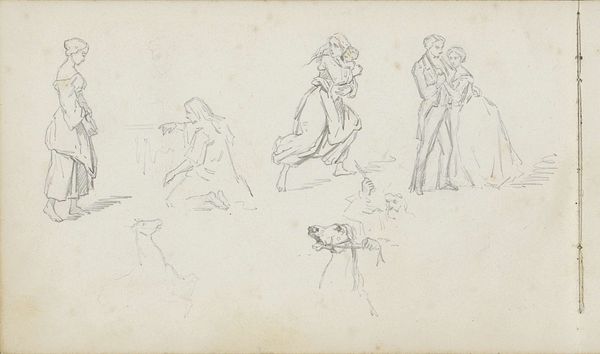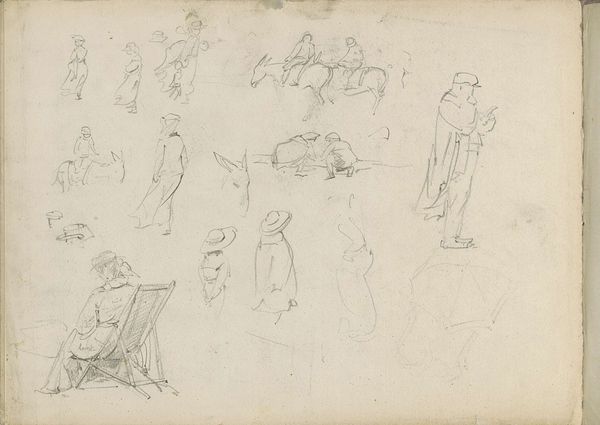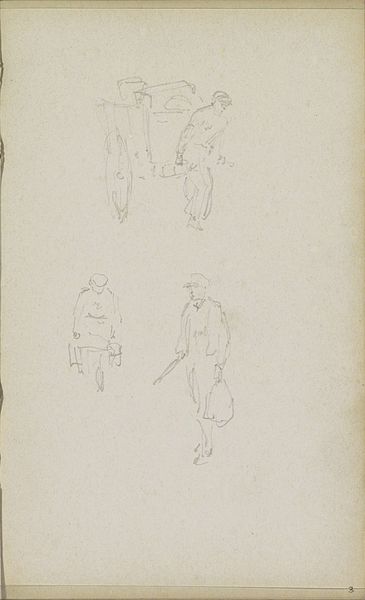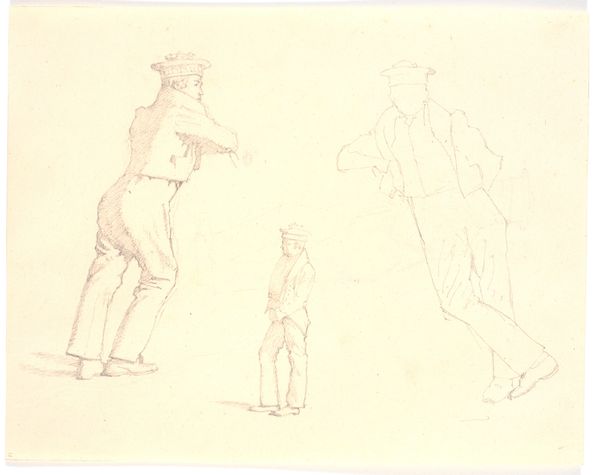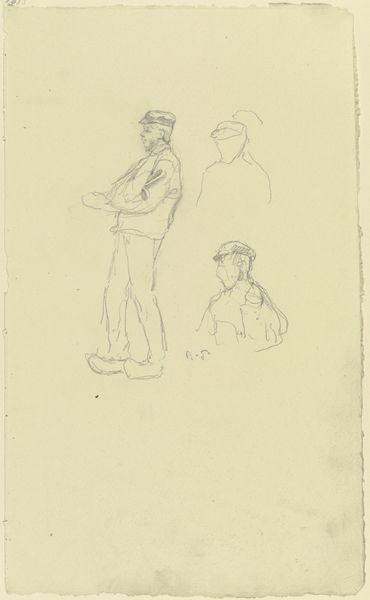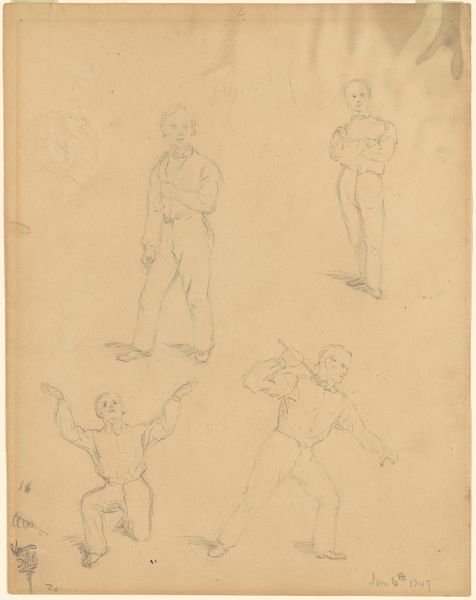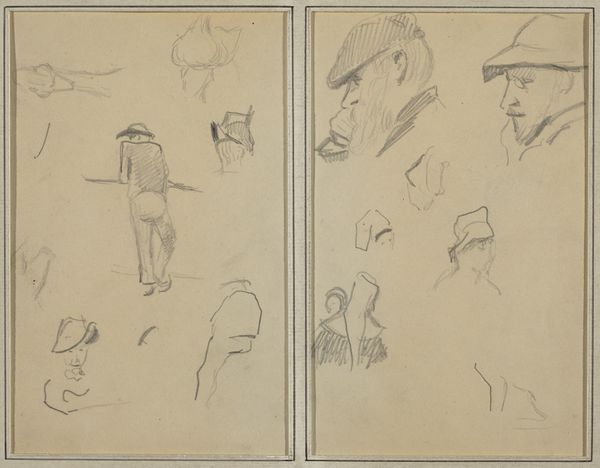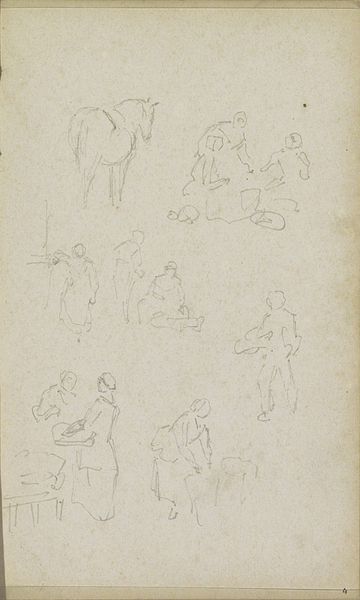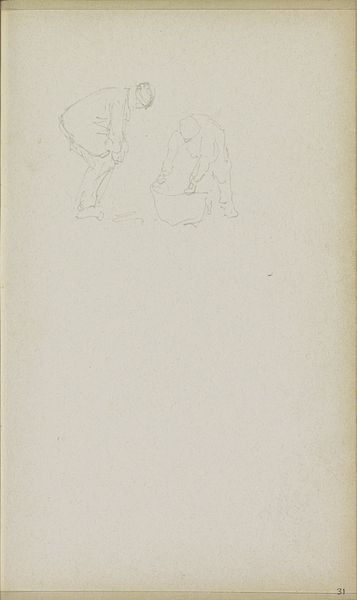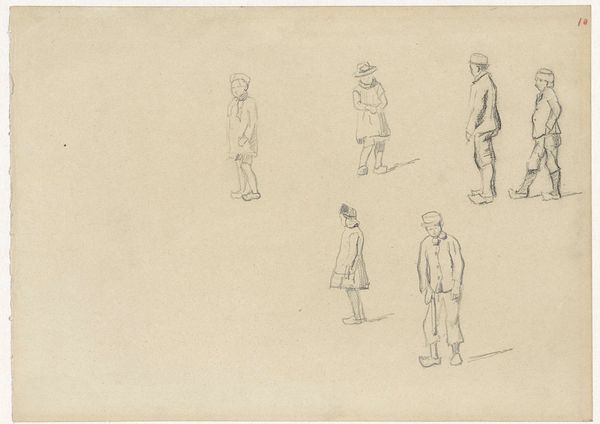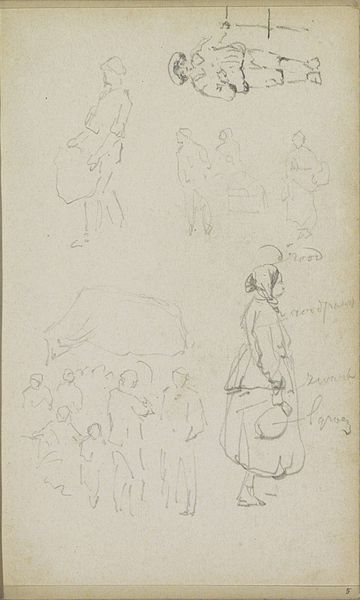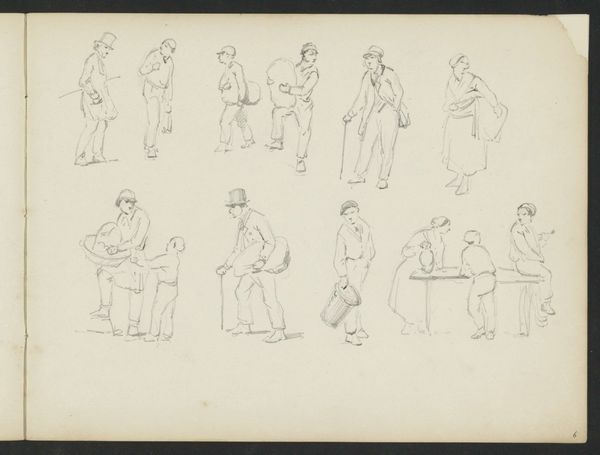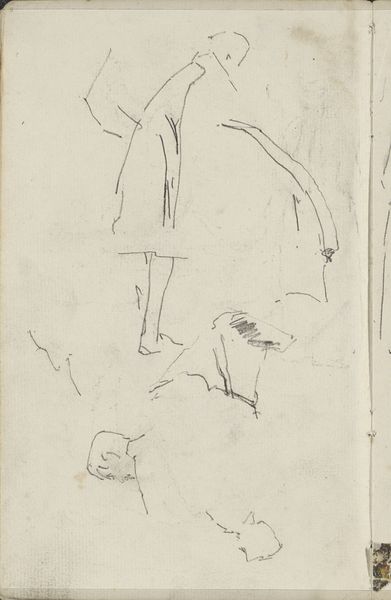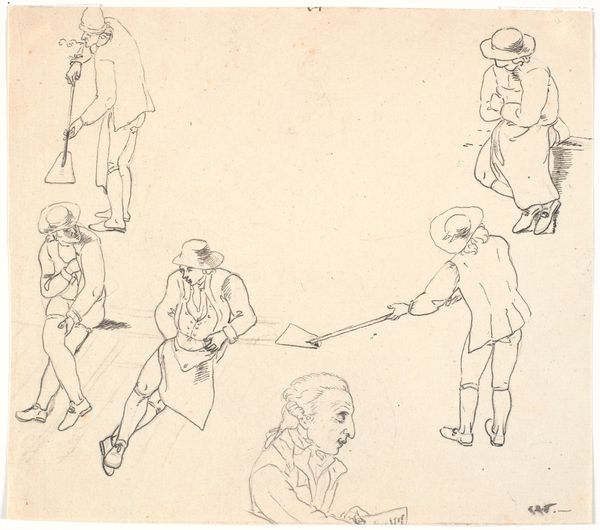
drawing, pencil
#
drawing
#
pencil sketch
#
landscape
#
figuration
#
pencil
#
horse
#
genre-painting
#
realism
Copyright: Rijks Museum: Open Domain
Curator: Welcome! Today, we are looking at "Figuurstudies", or "Figure Studies", a pencil drawing by Adrianus Eversen, likely created sometime between 1828 and 1897. Editor: There's a compelling simplicity to this. It feels raw and immediate, capturing everyday scenes and gestures. It's not overworked; the pencil lines almost seem to dance on the page. Curator: Absolutely. Eversen was known for his genre paintings, and this sketch offers a glimpse into his working method. It's like observing him practice and refine his skills at portraying figures and their movements. Consider that during his time, artistic training relied heavily on these kinds of preliminary sketches and studies, especially those related to realist figuration, a rising artistic trend in that era. Editor: Looking at it from a materials perspective, you have to appreciate the economy of the pencil. It's a humble tool, accessible to many, allowing the artist to quickly capture observations and ideas. The quality of the paper, its texture, also influences the final image. Was it a commonplace sketchbook or something more deliberately prepared? This drawing embodies the work inherent to crafting realistic paintings—laying the groundwork for formal elements. Curator: Precisely. We can even read societal cues from the way he’s chosen to depict the figures and capture elements of labor or leisure. It allows the artist to engage with those subjects and comment on them without the grandiosity of formal painting. Editor: And what about the figures themselves? I see someone leading a horse. There's a beautiful dynamic between human and animal, the implication of work, movement, and perhaps a rural context. Also, the man taking off his coat: notice how a simple act is rendered with such careful attention to form and the way the garment hangs. The studies become small meditations on ordinary interactions. Curator: Indeed. This work encapsulates art's role in chronicling everyday life, a precursor for other genre painters’ exploration into modern society. Editor: In observing those everyday details, Eversen highlights not just what people *did* but how their labor shapes them. Curator: I’m left appreciating how something seemingly simple on the surface offers complex insights into an artist’s practice and a particular time period. Editor: And I admire its humility: the marks of labor involved in refining an image and observing the beauty in fleeting, ordinary instances of labor and interaction.
Comments
No comments
Be the first to comment and join the conversation on the ultimate creative platform.
